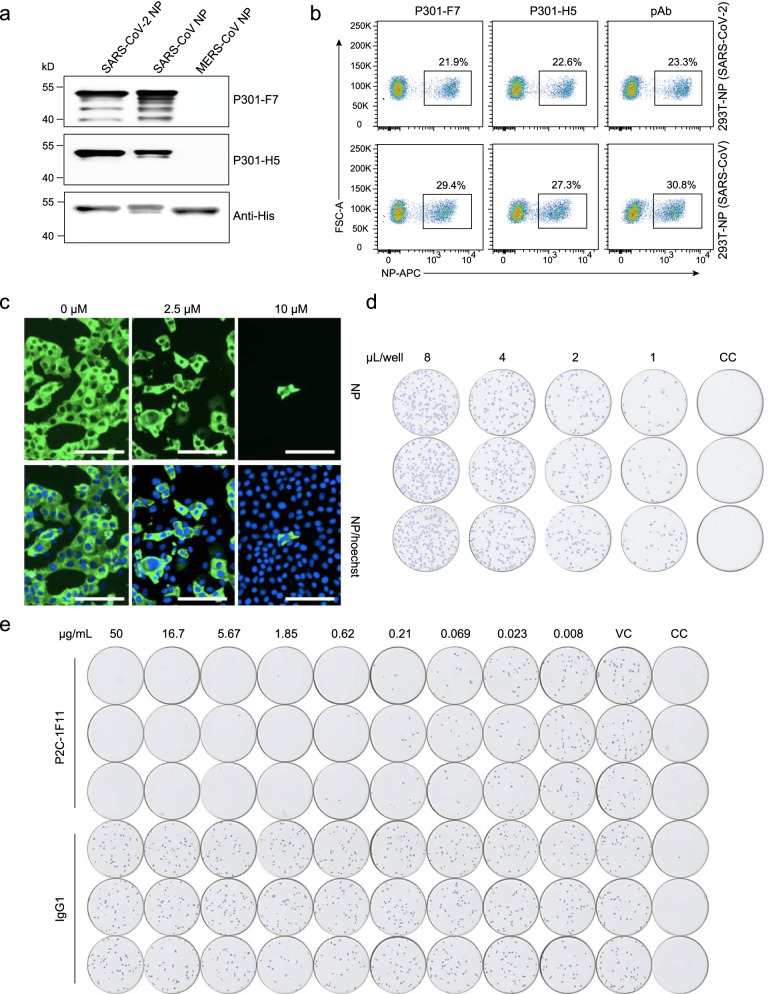Fig. 2.
The application of P301-F7 and P301-H5 in the detection of NPs in multiple biochemical assays. a Western blot analysis of the binding activities of P301-F7 and P301-H5 to NPs of SARS-CoV-2, SARS-CoV, and MERS-CoV, respectively. The His-tag at C-terminus of each NP detected by the His-specific antibody is used here as a positive control in the assay. b Flow cytometry analysis of the binding activities of P301-F7 and P301-H5 to the SARS-CoV-2 and SARS-CoV NPs. Commercial polyclonal antibodies of one kind are used here as a positive control. c Immunofluorescence analysis of the inhibition effect of SARS-CoV-2 live virus by Remdesivir. Intracellular expression of NP was detected by staining Vero E6 cells infected with SARS-CoV-2 by P301-F7. The nuclei is stained with Hoechst. d The immune spot assay analysis of P301-F7 for recognizing the Vero E6 cells infected with SARS-CoV-2 live virus represented by blue spots. e The immune spot assay analysis of the inhibition efficiency of SARS-CoV-2 live virus in Vero E6 cells by P2C-1F11. IgG1 is a negative control of irrelevant antibody. VC: virus control without antibody. CC: cell control without virus and antibody. Each experiment was performed twice and one representative result was shown

